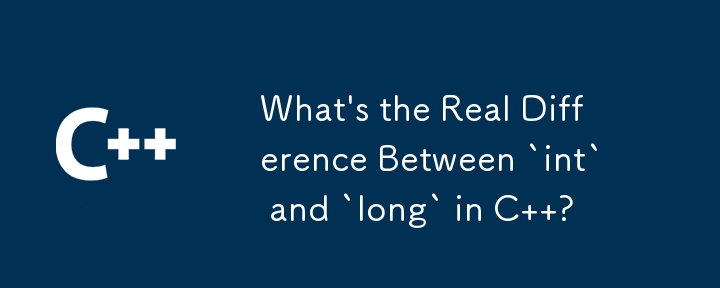

Understanding the Difference Between int and long in C
The distinction between int and long data types in C often raises questions. While it may seem straightforward that they both occupy 4 bytes and share the same value range, this assumption is not entirely accurate.
The key difference is that their sizes and value ranges are implementation-dependent. This means that different platforms or compilers may define these types differently.
For example, on Windows systems, both int and long have a size of 4 bytes and a value range from -2,147,483,648 to 2,147,483,647 (2^31). On other systems, this may not hold true.
On Alpha systems, for instance, a long is 64 bits wide, while an int remains 32 bits. This means that the value range for long is significantly larger on Alpha systems.
The Intel C compiler provides a comprehensive guide to the rules for variable platform sizes:
| OS | Architecture | Size |
|---|---|---|
| Windows | IA-32 | 4 bytes |
| Windows | Intel 64 | 4 bytes |
| Windows | IA-64 | 4 bytes |
| Linux | IA-32 | 4 bytes |
| Linux | Intel 64 | 8 bytes |
| Linux | IA-64 | 8 bytes |
| Mac OS X | IA-32 | 4 bytes |
| Mac OS X | Intel 64 | 8 bytes |
Therefore, it is important to consider the platform or compiler being used when choosing between int and long. They should not be used interchangeably without considering the implementation-specific characteristics.
The above is the detailed content of What's the Real Difference Between `int` and `long` in C ?. For more information, please follow other related articles on the PHP Chinese website!
 How to restart regularly
How to restart regularly
 Windows cannot access the specified device path or file solution
Windows cannot access the specified device path or file solution
 What is the difference between 5g and 4g
What is the difference between 5g and 4g
 Remove header line
Remove header line
 oracle insert usage
oracle insert usage
 How to restore IE browser to automatically jump to EDGE
How to restore IE browser to automatically jump to EDGE
 How to start mysql service
How to start mysql service
 What is the difference between css framework and component library
What is the difference between css framework and component library




